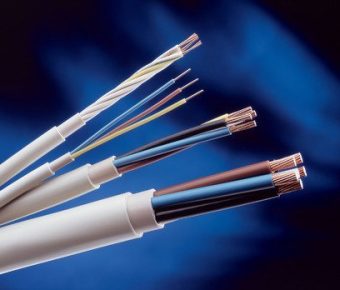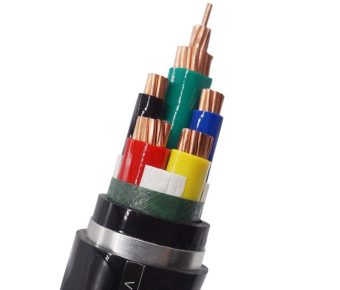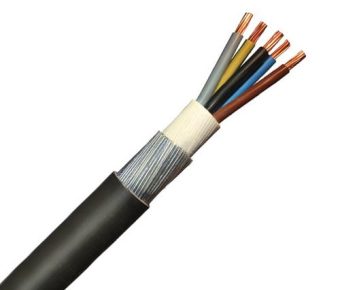- Leading Cable and Wire Manufacturer-ZW
- swa cable
SWA Cable
- According to IEC and GB Standard
- XLPE & PVC Cable
- Approved by SGS, BV, ISO
- Large stock swa cables with different sizes
SWA Cable: 5 Insightful Pieces of Information You Need to Know
A steel Wire Armoured Cable known as an SWA Cable is arguably the best power and auxiliary control cable for mains electric supply. Its armour is highly effective in mitigating any risks of the cable getting pinched or damaged. Thus, it comes in handy when transmitting electrical power or data in punitive environments. This cable is one of the most reliable cables with regard to the safety and reliability of most industrial and outdoor applications. Consequently, it is easy to imagine that a significant number of people have a wealth of knowledge on an SWA electrical cable.
However, according to some recent research articles published by authoritative sources, most people lack any meaningful information regarding an SWA wire. Are you one of those people? If the answer is yes, sit back, relax, and read this post because we’ve got you covered. By the time you finish reading, you will have acquired insightful pieces of information, including the actual SWA cable meaning.
SPOILER ALERT: A free expert guide on how to put an armoured cable underground at the end of this post.
1.What is SWA Cable?
As I mentioned earlier, SWA stands for Steel Wired Armoured. So, to answer the question posed above, it is simply an electrical cable designed to withstand several harsh conditions. Its ability to withstand adverse conditions made it an ideal cable for underground wiring and mains electricity supply networks. It is also suitable for several indoor and outdoor applications that involve an extreme risk of cable damage. If you intend to carry out electrical installations in harsh environments, it would be best if you invested in an SWA cable. What is so superior about this type of cable?
SWA cables have immense mechanical protection. This means that they are durable even in the most extreme conditions and are overwhelmingly reliable. Understandably, they are a bit more costly than conventional cables. Most people often avoid most types of armoured cables due to their pricing, even though they fit their wiring needs perfectly.
Frankly, focusing on SWA cable prices instead of their features and advantages is naïve if not outrightly unwise. Have you heard of the phrase ‘a short-cut is always dangerous’? It is perfectly applicable in this case because choosing an ordinary cable will lead to expensive rampant replacements and repairs. Using an SWA wire is less costly in the long run. For better pricing, it is advisable to enquire prices from several SWA cable suppliers. Considering that they are many, there’s a significant chance that you’ll find a cheap SWA cable.
2.When Do I Need To Use an SWA Cable?
The main feature of SWA cables is their ability to withstand harsh conditions. Thus, it would be best to use an SWA Cable when dealing with any electrical application susceptible to physical damage. Such applications include industrial fixed power installations, residential underground electrical systems, and power networks, to name a few.
There are several SWA cable manufactures which means that your cable choices are not limited. It would help if you took as much time as possible to explore all your options when choosing a cable. More importantly, you have to remember that SWA cables are not one-fits-all. There are several types, each designed to serve specific purposes. For instance, a 2.5 mm SWA cable can only support applications that range from 28 to 39 amperes depending on the installation environment. How do you choose an appropriate SWA wire?
Well, the most important thing to consider when choosing a cable is its size. There are several SWA cable sizes. You have to ensure that the selected size of cable can carry the electrical current required by the intended application.
A cable’s carrying capacity increases with each increase in the size of the conductor wire. For example, a 4 mm SWA cable can carry up to 49 Amperes, whereas a 10 mm SWA cable can carry up to 90 amperes depending on the installation environment. There several other things to consider when choosing an ideal steel wire armoured cable. Thus, you should consult your local electrical cable expert before you make any decision.
3.What is the Difference between AWA and SWA Cable?
Essentially, AWA stands for Aluminium Wire Armour. You can easily note the difference between the two types of cables by looking at their abbreviations’ whole meaning. An AWA wire is primarily used in single-core cables due to its non-magnetic feature. Why is this feature important? Well, an electric current goes through a cable, it generates a magnetic field.
The magnetic field grows stronger with each voltage increase. This magnetic field induces eddy currents in any SWA wire, which often causes overheating in AC systems. Thus, the non-magnetic feature in AWAs is crucial because it prevents overheating of AC systems.
Considering that SWAs can cause significant harm to AC systems, it is best to use them for outdoor or underground applications. Apart from its ability to provide mechanical shielding, an SWA cable’s armour can tolerate high pulling loads. Currently, the SWA wire is used in several industries, including the construction and transportation industries.
4.What is the Current Rating of an SWA Cable?
As I indicated earlier, there are several types of SWA cables. Each type of cable has its current rating. What is a current rating? Well, it is the maximum current carrying capacity of an electrical cable. A cable’s current rating is determined by the electrical resistance of the conductor and the insulation temperature.
Nonetheless, you have to remember that insulation temperature may vary depending on the installation environment, and this causes variations in the current rating. For instance, the current rating of a 6 mm SWA cable ranges from 44 to 66 amperes depending on the ambient temperature. Are you interested in an SWA cable but facing challenges in select a cable with an ideal current rating? The image below can guide you in choosing a perfect cable;
5.How do you put an armoured cable underground?
If you are thinking about running an SWA cable underground, you must ensure that you use an appropriate cable. An XLPE SWA cable is an excellent example of a cable that you can use for underground installations. Still, you need to follow certain rules when doing underground installations regardless of the type of cable you are using. For instance, you have to talk to your local inspector about codes governing underground installations and secure a permit to do so. How do you bury an armoured cable? Here are a few expert tips that you need to follow;
- First, you have to decide how much you are willing to dig because it determines the type of cable you need to use.
- Assuming you are using a direct-burial armoured cable with no conduit, you have to dig 12 inches deep. You must also ensure that the SWA cable has GFCI protection before burying it.






